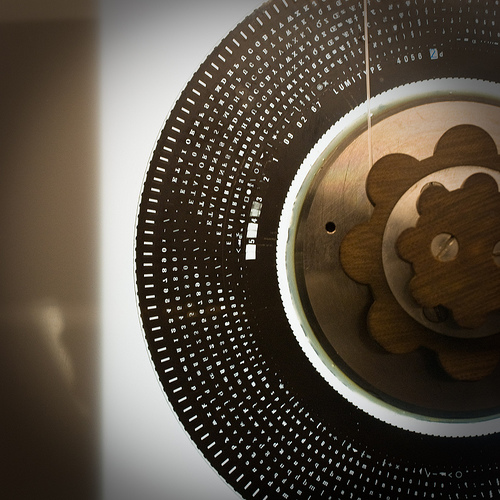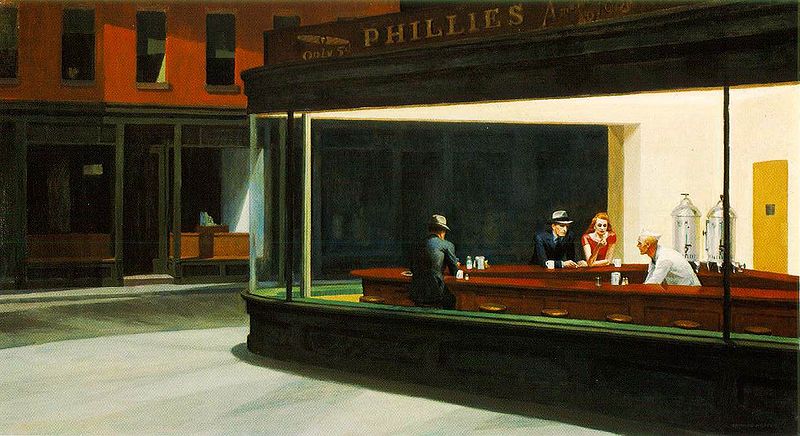Links and write-ups about beautiful things from around the web!
-
Light-driven nanoscale plasmonic motors
Moving things (very, very, very tiny things) using nothing but photons. Not immediately useful given the scale, but this is a first and could have applications in nanoelectromechanics and biology. Originally this same principle was thought to be what powered the nifty Crookes radiometer (that black-and-white vaned vacuum bulb thing that’s now usually sold as a novelty desk toy), but that device is actually moved by thermal transpiration or temperature differences.
(If the above link is behind a paywall for you, you might try the basic Nature writeup instead)
-
Matchmoved Mario
Super Mario Bros. from Andreas Heikaus on Vimeo.
Super Mario Bros. speedrun matchmoved onto a real-life wall. Fun to think about.
(Via Waxy)
-
Virtual Pottery Wheel
L’Artisan Electronique, an openFrameworks-powered “virtual pottery wheel”. Users can deform the cylinder geometry by waving their hand between the lasers and then print a physical copy of their piece using an attached RepRap machine.
(Via Make)
-
Lumitype

From the New York Times obituary for Louis Moyroud, co-inventor of the phototypesetting Lumitype machine that revolutionized the newspaper industry in the 1950s:
Then, in the early 1940s, Mr. Moyroud and Mr. Higonnet — electronics engineers and colleagues at a subsidiary of ITT (formerly International Telephone & Telegraph) in Lyon, France — visited a nearby printing plant and witnessed the Linotype [the older Victorian-era printing process that was still in use] operation.
“My dad always said they thought it was insane,” Patrick Moyroud (pronounced MOY-rood) said. “They saw the possibility of making the process electronic, replacing the metal with photography. So they started cobbling together typewriters, electronic relays, a photographic disc.”
The result, called a photo-composing machine — and in later variations the Lumitype and the Photon — used a strobe light and a series of lenses to project characters from a spinning disc onto photographic paper, which was pasted onto pages, then photoengraved on plates for printing.
If you’ve ever seen the older lead-alloy-fueled “hot metal” Linotype process you’d agree: it was crazy.
(Photo of the Lumitype/Photon wheel by Flickr user Jeronzinho)
-
Nighthawks

From an Op-Ed in Monday’s New York Times about a frustrated search for the existence of the “real” Nighthawks diner painted by Hopper:
Over the past years, I’ve watched bakeries, luncheonettes, cobbler shops and much more come tumbling down at an alarming rate, making space for condos and office towers. Now the discovery that the “Nighthawks” diner never existed, except as a collage inside Hopper’s imagination, feels like yet another terrible demolition, though no bricks have fallen.
It seems the longer you live in New York, the more you love a city that has vanished. For those of us well versed in the art of loving what is lost, it’s an easy leap to missing something that was never really there.
To me, it’s quite the opposite: Hopper was delivering to us an entire city’s electric nightlife collapsed into one tidy, incredibly lonely painting, and that is far more interesting than any image of a specific, real diner. Why mourn the non-existence of a restaurant when the sadness and predation that Hopper reflects in us still exists in every large city, at no risk of demolition?
-
Pallophotophone
The world’s only working (modern) Pallophotophone plays 80-year-old NBC radio broadcasts:
The pallophotophone was an early audio recorder created by GE researcher Charles Hoxie in 1922. Rather than using magnetic wire or lacquer disks, the device captured audio waveforms on sprocketless 35 mm film as a series of 12 parallel tracks reflected from a vibrating mirror. It was used to record some of the world’s oldest surviving radio broadcasts on Schenectady, New York radio station WGY between 1929 and 1931.
As a forgotten optical medium, I guess its more modern analog would be laserfilm discs. Sort of working along the right path, but just not practical compared to other media coming out at the time. There’s more about the rediscovered pallphotophone recordings on the GE Reports blog.
(Via Coudal)
-
Structured Light
Real-time 3D capture at 60fps using a cheap webcam and simple projected pattern of light points. The structured-light code is open source, looks like a pretty cool project.
(Via Make)
-
Open Data Literacy
It is worth remembering: We didn’t build libraries for an already literate citizenry. We built libraries to help citizens become literate. Today we build open data portals not because we have a data or public policy literate citizenry, we build them so that citizens may become literate in data, visualization, coding and public policy.
David Eaves argues that the best way to foster a data-literate society is to open the floodgates on open data, creating niches for discussion and analysis to engage the citizenry in much the same semi-guided way that public libraries provided in the 19th Century.
(Via Radar)
-
James Joyce Synthetic Cell
To live, to err, to fall, to triumph, to recreate life out of life.
The above quote from James Joyce’s Portrait of the Artist as a Young Man was inscribed as a watermark into the DNA of the much-discussed synthetic cell created a couple of months back by Craig Venter’s team. From The Loom:
The scientists who produced the new synthetic cell copied the genome of a microbe, letter for letter, and then inserted the synthetic version into a host cell. To determine that their experiment worked, they needed a way to tell the genomes of their synthetic cells from the natural genomes that were their model. So they inserted “watermarks” into the artificial genome. These sequences of DNA (which spelled out the work of Joyce and others through the genetic code) sit in non-coding regions of the microbe’s DNA. As a result, these watermarks cannot disrupt any essential protein-coding genes or stretches of DNA that are vital for switching genes on and off.
-
God-Particle-Sounds
Music of the Large Hadron Collider. From Discover:
Lily Asquith, a physicist searching for the Higgs boson–the elementary particle believed to give everything in the universe mass–is using more than her eyes. With artists and other physicists, she started the LHCsound project to hear subatomic particles.
I’m rarely convinced that audio visualization (what’s the better term for this field?) makes patterns in data easier to find, but it sure can sound interesting.
